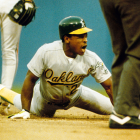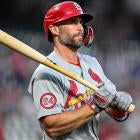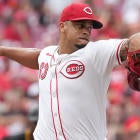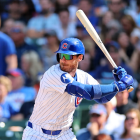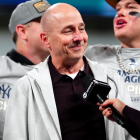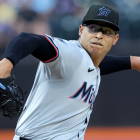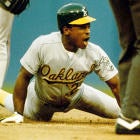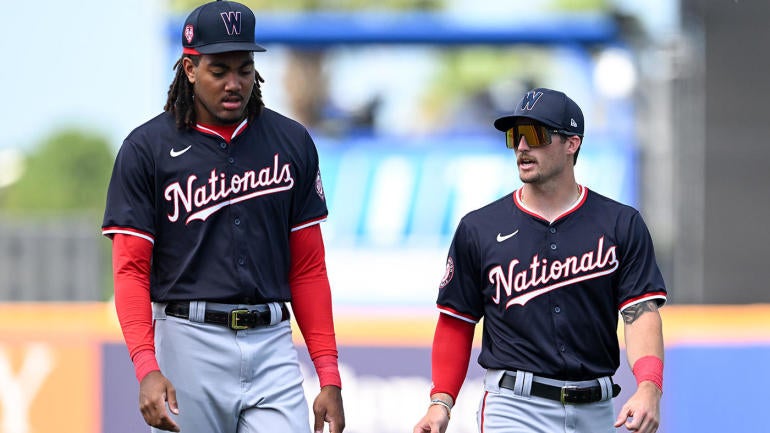
The Washington Nationals may not be in contention for a playoff berth (they entered Friday 10 1/2 games back of the NL's third wild card spot), but they're giving their fans reason to stay tuned the rest of the way. That's because the Nationals are expected to promote outfielder Dylan Crews, the No. 2 pick in the 2023 amateur draft, to the majors on Monday for his big-league debut against the New York Yankees.
Crews, 22, hit .277/.352/.459 over his first 134 minor-league games. He'll play in one more, serving as the DH for Washington's Triple-A affiliate on Friday night, before heading off to join the big-league club. (He won't be activated until Monday.) Crews will slot onto a Nationals team that is starting to round into shape. As we explained elsewhere, a strong offseason could catapult the Nationals into the playoff picture.
Of course, there's still a month of regular season baseball to be played before teams can turn their attention toward their winter plans. It stands to reason that the Nationals are about to become a more popular MLB.TV choice across the country, with fans wanting to get their first prolonged exposure to Crews (among others). With that in mind, we here at CBS Sports wanted to provide a guide of sorts to the Nationals' core, breaking down five things worth knowing about Washington's roster ahead of Crews' debut.
Let's get to it.
1. Exciting outfield in place
Crews and James Wood, the gem of the Juan Soto trade with the Padres, entered the season ranked as CBS Sports' Nos. 5 and 6 best prospects in the minors. They're both potential middle-of-the-order sluggers who should lock down the corner-outfield spots for years to come provided that they develop as desired. (And Wood, we'll note, has hit .289/.379/.458 over his first 45 big-league games.)
This may be the call of the year 🤣 pic.twitter.com/QEwJ5FU3D7
— MLB (@MLB) August 16, 2024
But Crews and Wood aren't the only two intriguing outfielders the Nationals employ. There's also center fielder Jacob Young who, as we recently highlighted, is one of the top fielding outfielders in the league. Allow us to quote ourselves:
On that note, Young has been the best outfielder defender in the majors, according to Statcast's Outs Above Average metric. He's notched 14 of those, whereas just two other players (Michael Siani and Daulton Varsho) have as many as 10. What's fascinating about Young is contained in Statcast's breakdown of his defensive components.
Obviously Crews and Wood are the real draws here. But Young's speed and defense makes him more than a placeholder. In turn, those three will give the Nationals one of the most intriguing outfields in all of the majors.
2. Improved double-play combination
Along with Woods, the other key piece of the Soto return was shortstop CJ Abrams. He broke out last season, but the truth is that he's made even bigger gains this year en route to a 118 OPS+ and his first career All-Star Game nomination. Abrams' defense still doesn't draw universal praise at the six, and he remains swing-happy. Nevertheless, he's improved his quality of contact and it's hard to argue with the topline results.
Luis García Jr. with a cold bat drop. 🥶 pic.twitter.com/Cns8VSIdEC
— MLB (@MLB) July 4, 2024
Depending on how you feel about Abrams' glove, you can make something of a case that he isn't the most promising middle infielder on the Nationals roster. Second baseman Luis García Jr. has also taken a leap this season, improving his quality of contact and positioning himself to complete his first career 20-20 effort. García has a 127 OPS+ and he grades as an above-average fielder at the keystone.
No matter which one you prefer, the Nationals have the luxury of staffing two middle infielders in the midst of career years -- and neither will celebrate their 25th birthday until next May at the earliest. That's a nice position to be in.
3. Bright spots in rotation
It's probably fair to write that if you can name one Nationals starting pitcher it's Patrick Corbin. If you can name two, the other is probably MacKenzie Gore. But it's the Nationals' three other starters who have emerged as legitimate bright spots this year. The trio we're talking about includes Jake Irvin, Mitchell Parker, and DJ Herz.
Irvin, 27, leads the staff in innings pitched and has notched 14 quality starts in 26 tries. He's not a flamethrower or a big-time bat misser, but he does pound the zone and creates good deception based on two variables: a truncated arm stroke and a deep release point that sees him generate around 7 feet of extension on average. (That is the distance from the pitching rubber to the release point.)
SHHHHHH SHHH Jake Irvin strikeouts pic.twitter.com/RBeDsAXiPh
— Washington Nationals (@Nationals) April 30, 2024
Parker, 24, debuted in April. He's since compiled a 94 ERA+ and a 3.25 strikeout-to-walk ratio. Parker, like Irvin, doesn't throw particularly hard or stand out in most ways. He too has deception on his side thanks to a deep, over-the-top release point. It doesn't hurt that his splitter, his third most commonly used offering, has generated a .205 batting average against and a 37.2% whiff rate, either.
Herz, 23, was obtained from the Cubs as part of the 2023 deal involving Jeimer Candelario. In 13 starts, he's notched a 96 ERA+ and a 3.57 strikeout-to-walk ratio. Of the three, he has the most conventionally appealing profile. That is to say that he produces an above-average amount of swinging strikes thanks in part to his 93 mph fastball. Herz also has some deception to his crossfire delivery. (Gee, the Nationals sure seem to have a type, huh?)
None of the three were considered big-time prospects entering the spring, so credit the Nationals for evaluating and developing them beyond expectations.
4. Down year for Ruiz
While there's a lot of reason to be encouraged by the Nationals roster, one downer is the poor season being authored by backstop Keibert Ruiz. For those who don't remember, Ruiz was obtained as part of the Max Scherzer trade in July 2021. The Nationals liked him enough to sign him to an eight-year extension worth $50 million, a move that suggested they believed he would be a big part of their next playoff squad.
Ruiz, 26, hasn't yet blossomed into a franchise cornerstone. His first two full seasons with the Nationals saw him flirt with league-average offense that didn't quite atone for his below-average framing. Alas, he's taken a big step back this year. He entered Friday ranked 30th among the 36 catchers with 200 or more trips to the plate this season, as judged by FanGraphs' park-adjusted wRC+ measure. That, plus his still-uninspiring defensive profile, doesn't make for a great combination.
It's hard to key in on one or two things Ruiz is doing worse. He's making less substantive contact; he's expanding his zone more often, resulting in a lower walk rate (not that he ever took a high rate of free passes); and he's swinging more overall. He's clearly emphasized lifting the ball, with his ground-ball percentage dropping to a career-low 32.7%, but it doesn't appear that shift has had the desired effect.
To be fair, Ruiz has heated up in August. In 17 games, he's batted .290/.323/.532 with four home runs. We'll see if he can keep it up. If not, he and the Nationals may need to revisit the drawing board ahead of the winter to find a new approach that works better.
5. More help coming
We'll wrap up this article by noting that the Nationals will have some additional reinforcements coming between now and next summer. We have two specific players in mind: right-hander Cade Cavalli and third baseman Brady House.
Cavalli, 26, was the 22nd pick in the 2020 draft. He made a quick ascent, debuting in August 2022. Unfortunately, he made just one appearance before requiring Tommy John surgery. Cavalli missed the entire 2023 season and only returned to the mound for regular season action in May. He was subsequently shut down again because of arm fatigue and he then missed additional time with the flu. Cavalli is throwing again and should be ready heading into 2025. If he can stay healthy, he has a chance to live up to his old promise as an athletic middle-of-the-rotation starter.
Fourth-ranked @Nationals prospect Cade Cavalli continued to rack up the K’s, striking out six in three frames in an exhibition vs. Team Israel: pic.twitter.com/ExPPMkxHqF
— Minor League Baseball (@MiLB) March 10, 2023
House, 21, was the 11th pick in the 2021 draft. He's split this season between Double- and Triple-A, batting .272/.308/.448 with five home runs in 30 games since being promoted. House has been a polarizing player dating back to his amateur days because of his approach and strikeout tendencies. There is some thump here (more than 44% of his Triple-A batted balls have had exit velocities above 95 mph), and the Nationals probably aren't going to keep him tucked away in Triple-A for another half season -- especially not if they believe they can chase down a playoff berth this time next year.









